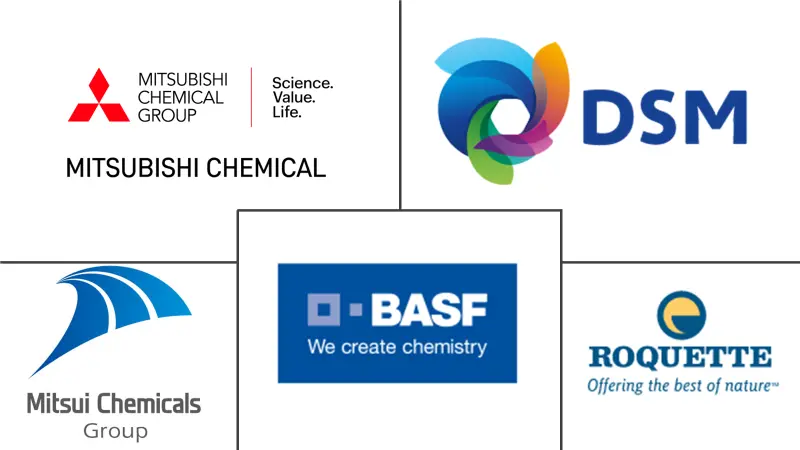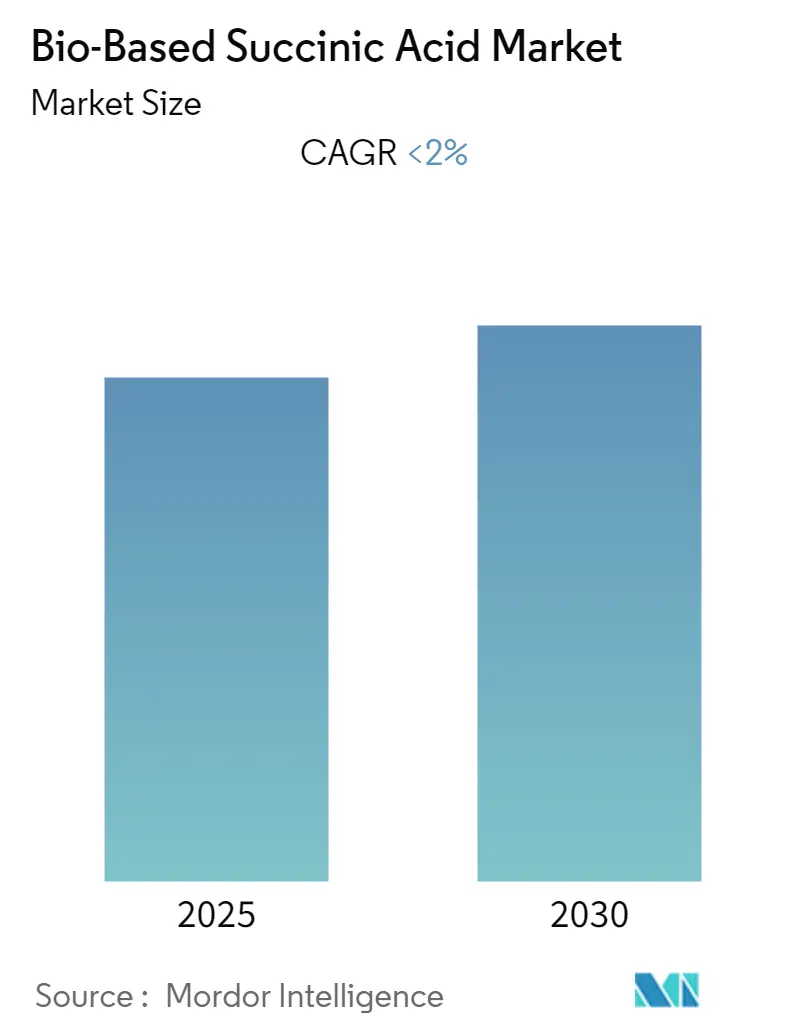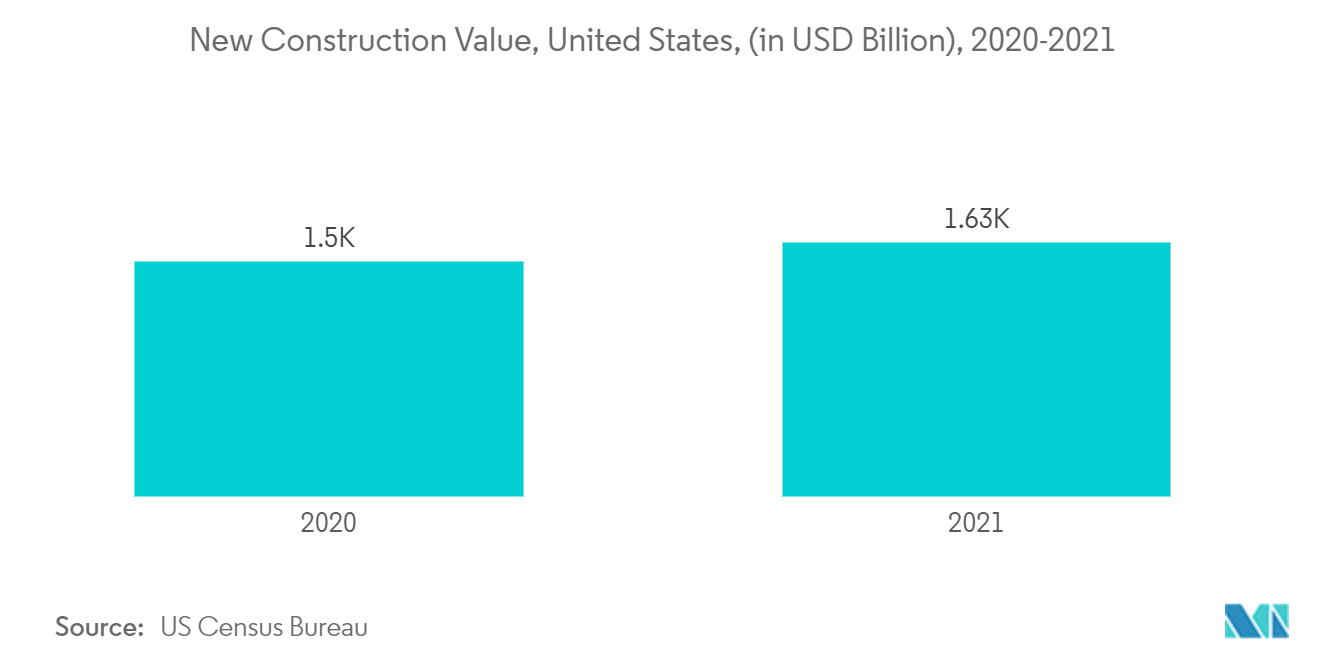Bio-Based Succinic Acid Market Analysis
The Bio-Based Succinic Acid Market is expected to register a CAGR of less than 2% during the forecast period.
- COVID-19 negatively impacted the market in 2020. However, the market reached pre-pandemic levels in 2022 and is expected to grow steadily in the future.
- The price uncertainty of fossil fuels, the increase in carbon footprints, and the increasing adoption of green chemicals are expected to surge the demand for bio-based succinic acid. On the other hand, the market's expansion is constrained by the higher cost of bio-based succinic acid and the prolonged extraction procedures.
- Further, sustainable dyes made from bio-succinic acid are anticipated to present a market opportunity in the future. The Asia-Pacific region is expected to witness high demand for bio-based succinic acid during the forecast period.
Bio-Based Succinic Acid Market Trends
Industrial Segment Dominated the Market
- Bio-based succinic acid is used as an intermediate in a wide range of industrial applications to make plastics, polyurethanes, solvents, coating, lubricants, and a variety of other things. The plasticizers made from bio-based succinic acid are used in flooring and general-purpose usage to provide heat resistance, food packaging, etc. Moreover, this eco-friendly succinic acid is also widely used in making resins, coatings, and ink for several industrial purposes.
- Bio-based succinic acid is widely used in various industrial applications to make products such as adhesives, solvents, sealants, resins, coatings, and polymers. Such products are widely used in the construction sector.
- Thus, the expanding construction industry is expected to surge the demand for bio-based succinic acid. For example, According to the US Census Bureau, the annual value for new construction put in place in the United States accounted for USD 1,626.4 billion in 2021, compared to USD 1,499.6 billion in 2020.
- Industries such as food and beverage, consumer goods, etc., continuously innovate new products, increase production, and resort to attractive packaging materials to reduce carbon footprints, thus surging the demand for bio-based succinic acid to produce adhesives. For example, the packaging sector in India is the highest end-user sector, holding about 67% of total adhesive users.
- The increased use of bio-based succinic acid in the industrial sector for the production of various products is expected to boost market growth in the coming years.
Asia-Pacific to Witness fastest Growth Rate
- Asia-Pacific accounted for the largest polyamide market in the past few years. The growing pharmaceutical, personal care, paints and coatings, etc. industries in various countries in the Asia-Pacific region are driving the market studied. Due to rising urbanization, the demand for bio-based succinic acid has increased across various industries.
- Products such as adhesives, solvents, sealants, resins, coatings, and polymers, are produced using bio-based succinic acid. Around 12.1 million metric tons of polymers were manufactured in India during the fiscal year 2021. India's highly varied chemical industry produces almost 80,000 items, augmenting the rise in demand for bio-based succinic acid.
- The key industrial product of succinic acid is 1,4-butanediol (BDO). BDO and its bio-based succinic acid derivatives are the industries' most used products. It is used as an intermediate in engineering plastics, polyurethane systems, etc. Additionally, emerging applications such as BDO, poly (butylene-co-succinate) (PBS), plasticizers (such as polypropylene), and polyester polyols are expected to increase the consumption of bio-based succinic acid during the forecast period.
- In India, Reliance Industries' production capacity for polypropylene reached 3,165 kilotons in 2022. This accounted for more than half of India's polyolefin production capacity, supporting the market growth in the region.
- Hence, due to the above-mentioned reasons, Asia-Pacific is anticipated to witness high growth during the forecast period.
Bio-Based Succinic Acid Industry Overview
The bio-based succinic acid market is consolidated in nature. Some of the major players in the market include BASF SE, Roquette Frères, DSM, Mitsui Chemicals, Inc., and Mitsubishi Chemical Corporation, among others.
Bio-Based Succinic Acid Market Leaders
-
BASF SE
-
Roquette Frères
-
Mitsubishi Chemical Corporation
-
DSM
-
Mitsui Chemicals, Inc.
- *Disclaimer: Major Players sorted in no particular order
Bio-Based Succinic Acid Market News
- December 2022: The Mitsubishi Chemical Group, in partnership with Chukyo Yushi Co., Ltd., developed a biodegradable/compostable dispersion solution using its plant-derived biodegradable/compostable polymer BioPBS, which comprises a succinic acid obtained from natural resources and 1,4-butanediol.
- August 2022: Technip Energies acquired DSM's Biosuccinium Technology to produce bio-sourced and fully biodegradable polymers. This method works with patented bio-polymer technologies to produce a commercially referenced bio-based succinic acid (bio-SAc) used as a feedstock in manufacturing polybutylene succinate.
Bio-Based Succinic Acid Industry Segmentation
Succinic acid is a chemical utilized directly in many industrial applications and as an intermediary in the synthesis of various polymers and resins. The biological generation of succinic acid from renewable resources has drawn considerable attention due to the depletion of crude oil and the requirement for sustainable development.
The bio-based succinic acid market is segmented by application and geography. By application, the market is segmented into industrial, pharmaceutical, personal care, paints and coatings, and other applications. The report also covers the market size and forecasts in 15 countries across major regions.
Market sizing and forecasts have been done for each segment based on revenue (USD million).
| Application | Industrial | ||
| Pharmaceutical | |||
| Personal Care | |||
| Paints and Coatings | |||
| Other Applications | |||
| Geography | Asia-Pacific | China | |
| India | |||
| Japan | |||
| South Korea | |||
| Rest of Asia-Pacific | |||
| North America | United States | ||
| Canada | |||
| Mexico | |||
| Europe | Germany | ||
| United Kingdom | |||
| Italy | |||
| France | |||
| Rest of Europe | |||
| South America | Brazil | ||
| Argentina | |||
| Rest of South America | |||
| Middle-East and Africa | Saudi Arabia | ||
| South Africa | |||
| Rest of Middle-East and Africa | |||
Bio-Based Succinic Acid Market Research FAQs
What is the current Bio-Based Succinic Acid Market size?
The Bio-Based Succinic Acid Market is projected to register a CAGR of less than 2% during the forecast period (2025-2030)
Who are the key players in Bio-Based Succinic Acid Market?
BASF SE, Roquette Frères, Mitsubishi Chemical Corporation, DSM and Mitsui Chemicals, Inc. are the major companies operating in the Bio-Based Succinic Acid Market.
Which is the fastest growing region in Bio-Based Succinic Acid Market?
Asia Pacific is estimated to grow at the highest CAGR over the forecast period (2025-2030).
Which region has the biggest share in Bio-Based Succinic Acid Market?
In 2025, the North America accounts for the largest market share in Bio-Based Succinic Acid Market.
What years does this Bio-Based Succinic Acid Market cover?
The report covers the Bio-Based Succinic Acid Market historical market size for years: 2019, 2020, 2021, 2022, 2023 and 2024. The report also forecasts the Bio-Based Succinic Acid Market size for years: 2025, 2026, 2027, 2028, 2029 and 2030.
Our Best Selling Reports
Bio-Based Succinic Acid Industry Report
Statistics for the 2025 Bio-Based Succinic Acid market share, size and revenue growth rate, created by Mordor Intelligence™ Industry Reports. Bio-Based Succinic Acid analysis includes a market forecast outlook for 2025 to 2030 and historical overview. Get a sample of this industry analysis as a free report PDF download.







